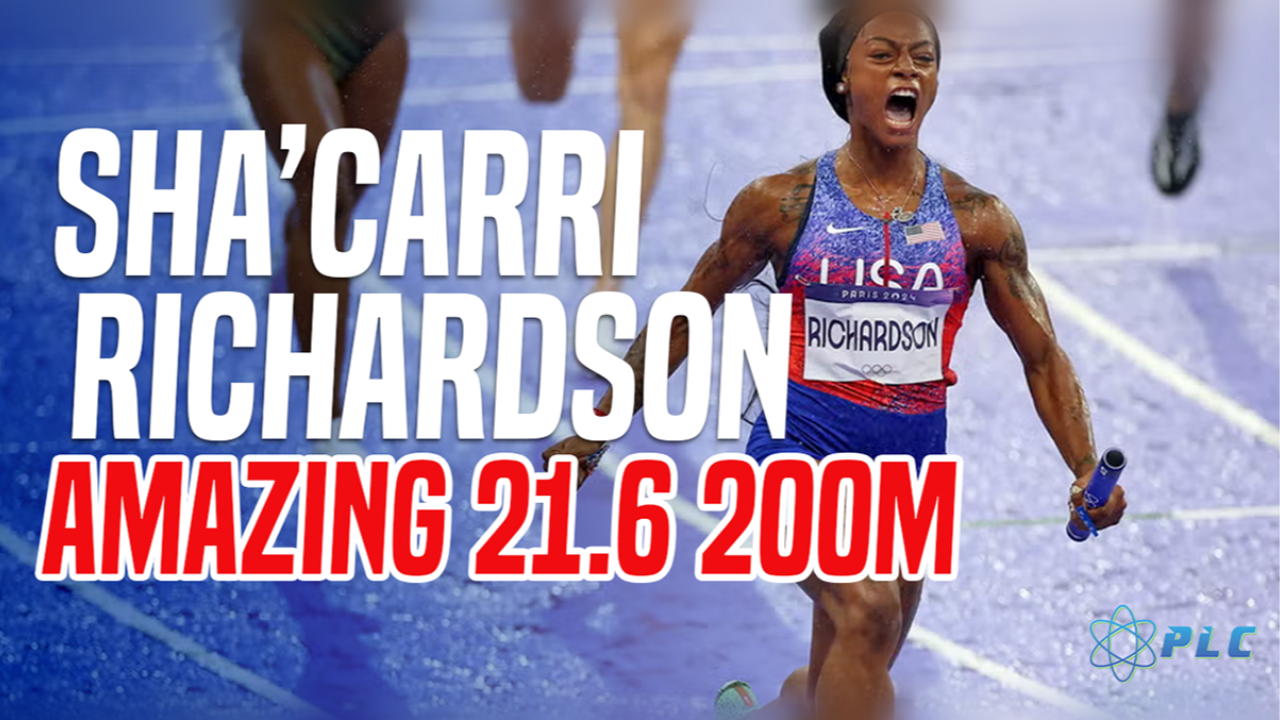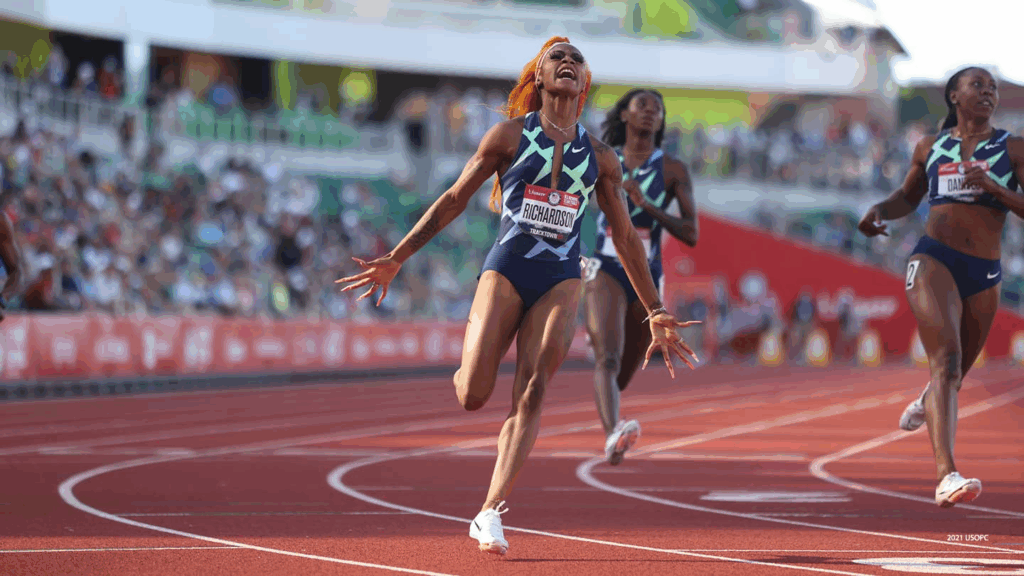Take a look at Sha'Carri Richardson's Amazing 200m Sprint Breakdown
Nov 17, 2025
Introduction to Sha'Carri Richardson’s Historic 200m Run and Collegiate Record
Sha’Carri Richardson’s 21.61-second 200-meter sprint, recorded a couple of years ago, ranks tied for the 10th fastest time ever run by a woman. Richardson’s fame in track and field is underscored by the multiple titles she has won throughout her career, from collegiate championships to national honors, establishing her as a prominent figure in the sport. This impressive performance highlights not only her raw speed but also the technical mastery and physical conditioning that elite sprinters require. Analyzing Richardson’s race offers valuable lessons for athletes and coaches aiming to optimize sprint performance.
 Image from Worldtrack.org
Image from Worldtrack.org
Early Acceleration and Forward Lean
One of the standout aspects of Richardson’s race is her explosive start. In the first 100 meters, she clocked an incredible 11.1 seconds, significantly faster than her competitors who were running around 11.5 seconds. This rapid acceleration is driven by her ability to maintain a strong forward lean and powerful knee drive during the initial strides. Maintaining a forward lean in the acceleration phase allows sprinters to apply force more effectively against the ground, propelling them forward with greater speed. Richardson’s technique in this phase is a key contributor to her fast start.
Curve Running Technique
The 200m race requires navigating a curve, which presents unique biomechanical challenges. Richardson excels in this aspect by keeping an upright posture and controlling her foot placement during the turn. Her inside leg lands slightly in front of her hips, which helps stabilize her motion and maintain speed on the curve. This contrasts with other sprinters who tend to land their feet directly underneath their hips. Landing slightly ahead allows Richardson to generate better control and force during the curve, making her transition onto the straightaway smoother.
Comparing to Male Sprinters
When compared to top male sprinters like Noah Lyles and Erriyon Knighton, Richardson’s foot placement and body mechanics reveal insightful contrasts. Noah Lyles tends to land his foot directly beneath his hip, aiding in efficient force transfer, while Knighton’s foot strikes more inside due to the sharper curve lanes. These differences highlight how lane assignments and individual biomechanics influence sprint technique.
 Image from Team USA
Image from Team USA
Key Technical Elements in Richardson’s Sprint
Foot Strike and Ground Contact
Richardson’s foot strike is aggressive and well-timed, with a hard contact on the ground that enables effective force application. Her ground contact time is impressively low, around 0.007 to 0.008 seconds—allowing her to maintain high stride frequency without losing power.
Arm Action and Upper Body Mechanics
A critical but often overlooked aspect of sprinting is the role of the upper body. Richardson’s arm swing is strong, controlled, and coordinated with her leg movements, contributing to overall speed and balance. In this breakdown, we emphasize the importance of upper body strength and mobility, particularly in shoulder extension and lat engagement, which facilitate a powerful and efficient arm drive. This upper body involvement helps sprinters maintain rhythm and generate additional propulsion.
Training Insights: The Role of Upper Body Strength at Louisiana State University
Why Upper Body Training Matters for Sprinters
Contrary to the common misconception that sprinting relies mostly on lower body power, upper body strength plays a vital role in sprint performance. Exercises targeting the shoulders, lats, and upper back improve arm swing mechanics, increase range of motion, and enhance core stability.
Richardson’s training includes focused upper body workouts such as pull-ups, band exercises, and occasionally bench presses. These exercises help create a more powerful connection between the upper and lower body, resulting in improved sprinting efficiency and speed.
Practical Upper Body Exercises for Sprinters
- Pull-ups and Chin-ups: Build lat strength and shoulder stability.
- Resistance Band Rows and Pulls: Improve shoulder extension and scapular control.
- Bench Press Variations: Enhance overall upper body power, when balanced with mobility work.
- Core Strengthening Movements: Vital for transferring power between upper and lower body.
By integrating these exercises into sprint training routines, athletes can see measurable improvements in acceleration and top speed.
Mental Preparation: The Mindset Behind the Sprint
Sha’Carri Richardson’s dominance in the 100 meters and 200 meters is not just a product of physical talent—it’s also the result of exceptional mental preparation. As a collegiate record holder and Olympic gold medalist, Richardson has learned through her experiences at the NCAA Championships and Olympic Trials that a strong mindset is essential for winning at the highest level. She employs visualization techniques before every race, mentally rehearsing her starts, transitions, and finishes to build confidence and focus. Positive self-talk and a growth mindset help her stay resilient, especially during high-pressure moments at events like the Miramar Invitational and Prefontaine Classic. Richardson’s ability to remain composed and motivated, even when the stakes are highest, sets her apart as a true champion. Her mental discipline is a key factor in her gold medal performances and her reputation as a consistent winner at major championships.
Overcoming Challenges on the Road to Greatness
The path to becoming a world champion is rarely smooth, and Sha’Carri Richardson’s journey is a testament to perseverance and grit. From her early days sprinting for Carter High School in Dallas, Texas, Richardson faced fierce competition and the inevitable setbacks that come with elite athletics. Competing at the AAU Junior Olympics and Field Junior Championships, she learned the value of adaptability and resilience—skills that would serve her well as she advanced to Team USA and the world stage. Injuries and tough losses could have derailed her career, but Richardson’s determination kept her focused on her goals. Her ability to bounce back from adversity was on full display at the Paris Olympics and World Championships, where she delivered winning performances that solidified her status as one of the best in the world. Richardson’s story is a powerful reminder that overcoming challenges is an essential part of achieving greatness in track and field.
Practical Tips for Sprinters Inspired by Richardson’s Performance
Focus on the Acceleration Phase
- Maintain a strong forward lean during the first 5-7 steps.
- Drive knees high and keep toes pointed upwards during swing phase.
- Use forefoot strikes to maximize ground force.
Prioritize Curve Running Technique
- Work on foot placement slightly ahead of the hips on the curve for better control.
- Practice maintaining an upright posture to navigate turns efficiently.
Incorporate Upper Body Strength Training
- Include exercises targeting shoulders, lats, and core to enhance arm drive.
- Balance strength training with mobility exercises to maintain shoulder range of motion.
Manage Recovery and Prevent Injuries for Olympic Trials
- Implement hydration and nutrition strategies to avoid cramping.
- Use dynamic warm-ups and cooldowns to prepare muscles for competition.
Legacy and Impact: Sha’Carri Richardson’s Influence on Track and Field
Sha’Carri Richardson’s impact on track and field extends far beyond her record-breaking times in the 100 meters and 200 meters. As a world champion and Olympic gold medal winner, she has inspired countless athletes with her electrifying performances and unwavering confidence. Richardson’s collegiate record and her historic first Olympic gold medal have set new standards for excellence, motivating the next generation to dream big. Off the track, her advocacy for diversity and inclusion, particularly within the LGBTQ+ community, has made her a role model for athletes everywhere. Through her partnership with Team USA and involvement in charitable initiatives, Richardson continues to give back to the sport that shaped her. Her legacy is one of breaking barriers, setting records, and empowering others to pursue their own paths to greatness. As she continues to compete and win, Richardson’s place in the history of track and field—as a winner, a leader, and a trailblazer—remains secure.
Conclusion: Lessons from World Champion Sha’Carri Richardson’s 200m Sprint
Sha’Carri Richardson’s 21.61-second 200m sprint is a masterclass in acceleration, curve running, and the integration of upper and lower body mechanics. This time was one of her personal bests and a highlight of her season, showcasing her exceptional progress and achievements during this period. Her performance demonstrates that sprinting success depends on a blend of technique, physical conditioning, and race strategy.
For athletes aiming to improve their sprint times, focusing on the acceleration phase, foot strike mechanics, and upper body strength can yield significant gains. By studying elite sprinters like Richardson and applying these principles, sprinters at all levels can enhance their performance and consistency on the track.
Watch our breakdown of Sha’Carri Richardson’s Fastest 200m ever or check out more of our blog posts for helpful reads!
Stay connected with news and updates!
Join our mailing list to receive the latest news and updates from our team.
Don't worry, your information will not be shared.
We hate SPAM. We will never sell your information, for any reason.

